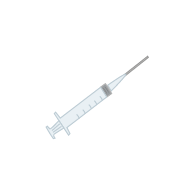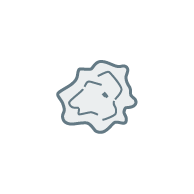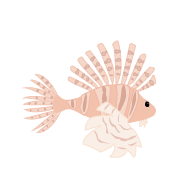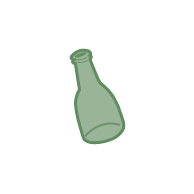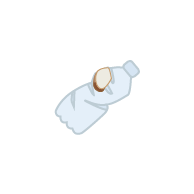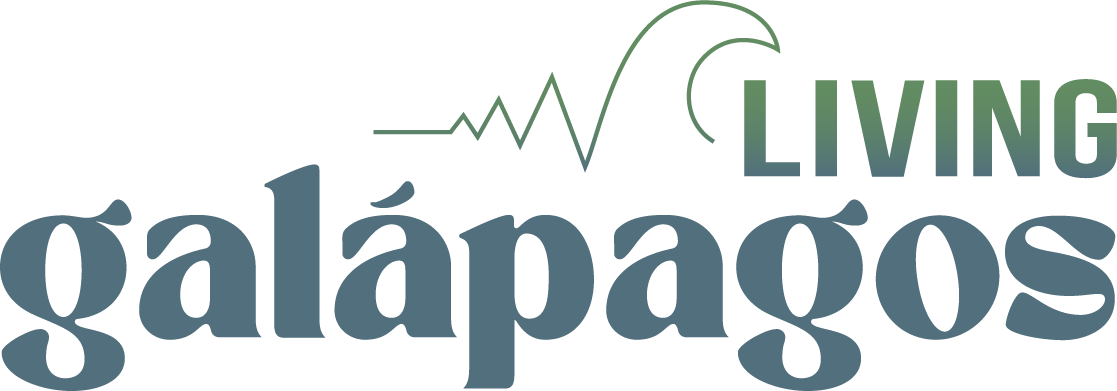Currents of Change
In an environment that shoulders the burden of the world’s pollution, these scientists and activists seek to inspire future conservationists.
Currents of Change
In an environment that shoulders the burden of the world’s pollution, these scientists and activists seek to inspire future conservationists.
REPORTERS
Camila Moreno
Elizabeth Sills
PHOTO
Angelina Katsanis
VIDEO
Claire Revere
Elise Mahon
INTERACTIVE
Maggie Wong
Brisa Muñoz, 5, squats in the sand and pinches a tiny blue shard between her fingers. “This is microplastic,” she explains with an authority that belies her years. The inlet is littered with cigarette butts, plastic candy wrappers and broken beer bottles. Muñoz collects the debris and places it in a grimy plastic bag she found under a pile of sticks.
A few feet away, her parents test out a new drone. Her mother, Daniela Alarcón, 35, observes the screen while her father, Juan Pablo Muñoz, 42, controls the joystick. They are taking a test flight to prepare for a research trip Alarcón is doing later that week in preparation for her doctoral thesis, which is examining the demography of blue whales surrounding the Galápagos.
Research is how she and Muñoz met. The two studied at the University San Francisco in Quito, both passionate about marine life and excited about the potential to make an impact on its science.
That’s why she decided to study Galápagan cetaceans, specifically blue and orca whales. She was drawn to these animals because of their history: Whale populations are now globally endangered, but were on the verge of extinction 50 years ago, overfished by becoming bycatch.
“Whales are the perfect example of what happens when we all get together and try to protect one species,” Alarcón said.
REPORTERS Camila Moreno-Lizarazo | Elizabeth Sills
PHOTO Angelina Katsanis
VIDEO Elise Mahon | Claire Revere
INTERACTIVE Maggie Wong
Brisa Muñoz, 5, squats in the sand and pinches a tiny blue shard between her fingers. “This is microplastic,” she explains with an authority that belies her years. The inlet is littered with cigarette butts, plastic candy wrappers and broken beer bottles. Muñoz collects the debris and places it in a grimy plastic bag she found under a pile of sticks.
A few feet away, her parents test out a new drone. Her mother, Daniela Alarcón, 35, observes the screen while her father, Juan Pablo Muñoz, 42, controls the joystick. They are taking a test flight to prepare for a research trip Alarcón is doing later that week in preparation for her doctoral thesis, which is examining the demography of blue whales surrounding the Galápagos.
Research is how she and Muñoz met. The two studied at the University San Francisco in Quito, both passionate about marine life and excited about the potential to make an impact on its science.
That’s why she decided to study Galápagan cetaceans, specifically blue and orca whales. She was drawn to these animals because of their history: Whale populations are now globally endangered, but were on the verge of extinction 50 years ago, overfished by becoming bycatch.
“Whales are the perfect example of what happens when we all get together and try to protect one species,” Alarcón said.
Both parents are marine biologists who work for the Galápagos Science Center on the island of San Cristóbal, researching the animals of the Galápagos Marine Reserve. Alarcón will begin her Ph.D. program in July, while Muñoz is in the final stages of writing his thesis. Both have witnessed the impact of plastic pollution on the species they study, and on the island itself.
“I went through the most isolated places in the Galápagos, the most remote places. No tourism, no fishing. Not even Charles Darwin probably visited those places,” Muñoz said. “But they were full of trash.”
Muñoz is writing his dissertation about the effects of plastic pollution on vertebrate animals, specifically sea turtles, black-striped salema fish and marine iguanas, a species endemic to the Galápagos. He assesses how much plastic is in the animals through fecal analysis, but also tests how much is present in the water and on the shores they inhabit.
“Recycling is the adult version of putting your fingers in your ears and saying “lalalalalala” in terms of plastic pollution.”
Plastic ends up in algae, which the iguanas eat. The good news is that it is not affecting their health, as far as Muñoz can tell. The bad news is that plastics are there at all.
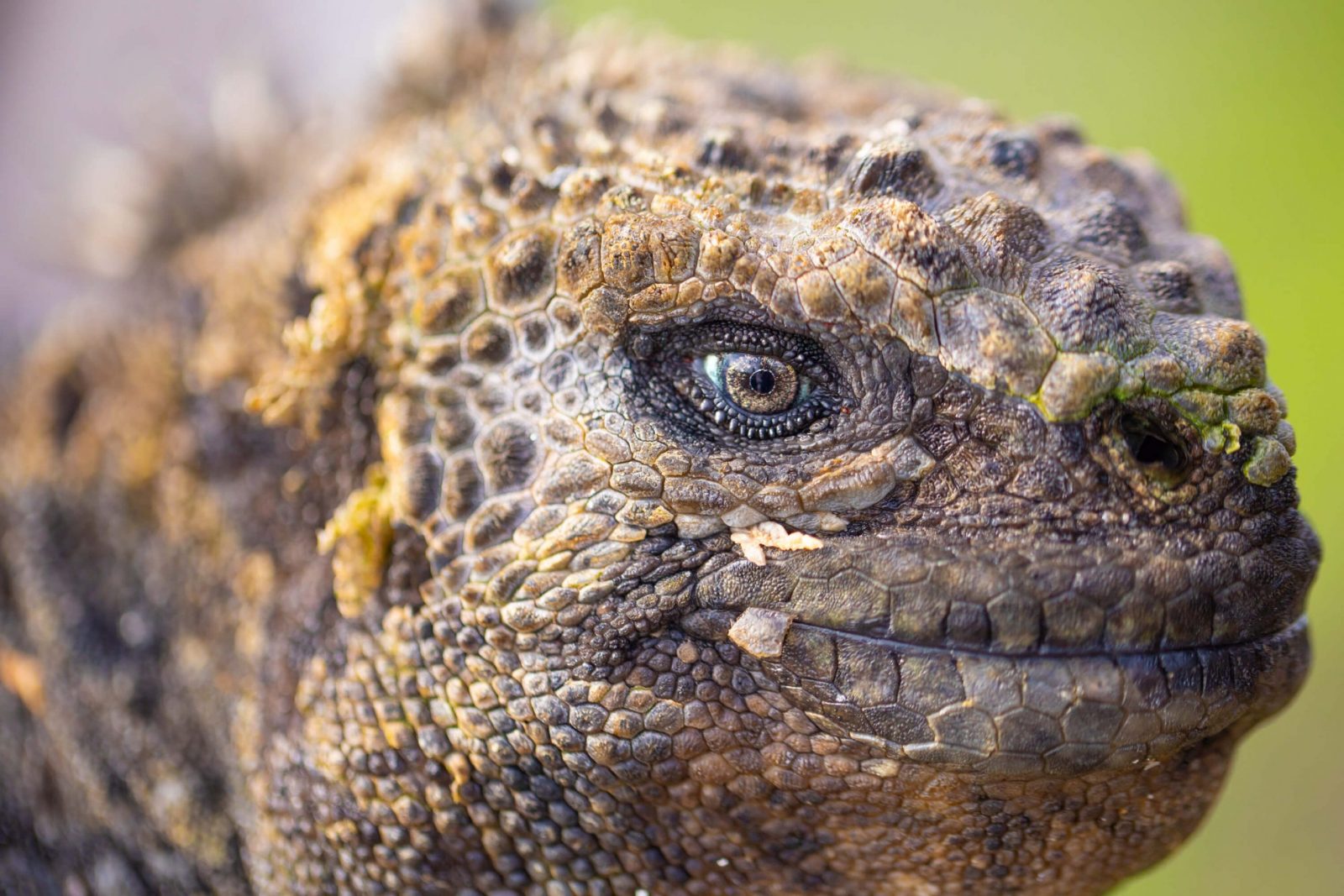
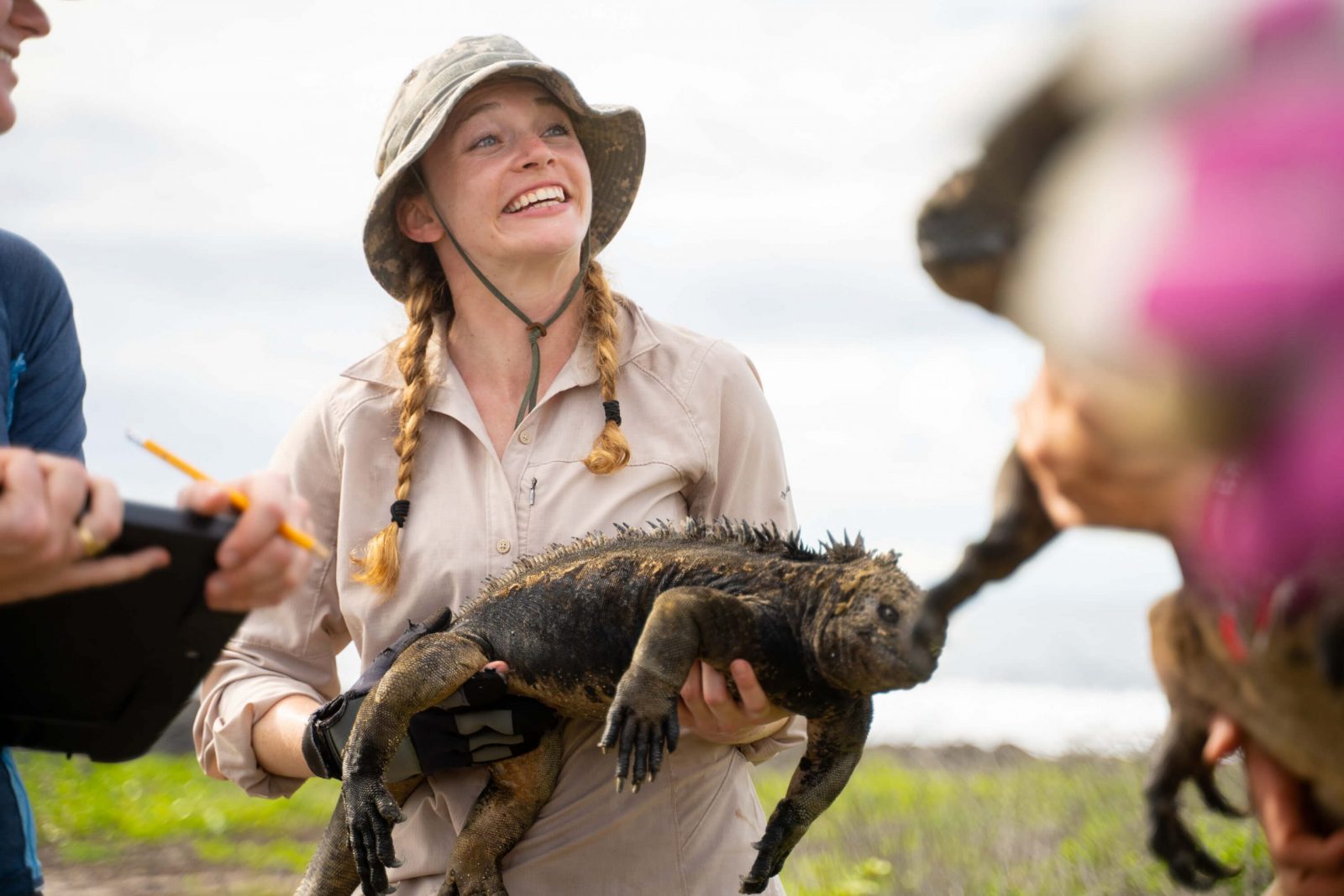
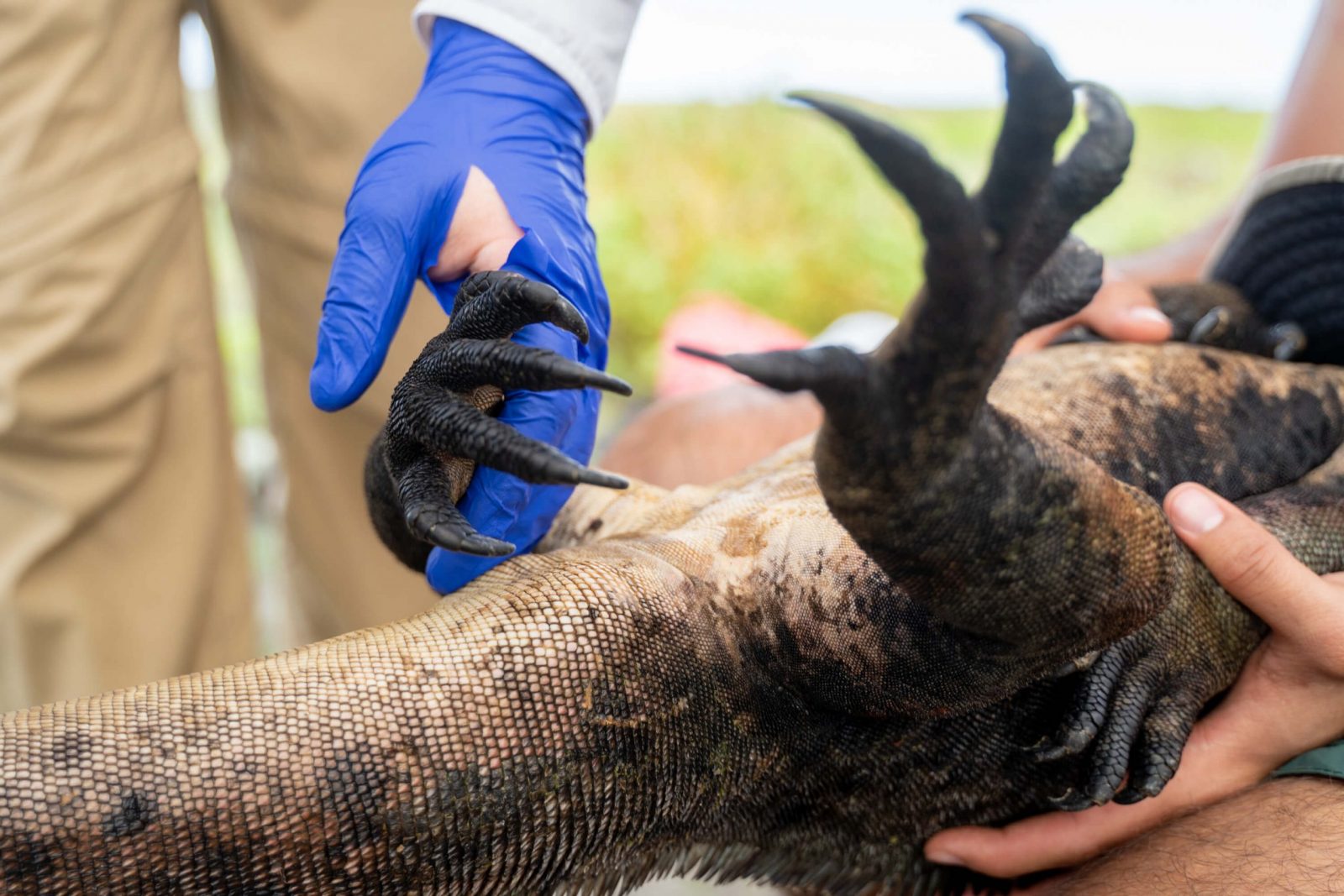
The team of N.C. State veterinarian students, led by Dr. Greg Lewbart, work at La Loberia beach on March 14, 2022 to add to Alarcón and Muñoz’ marine iguana health database. This process included catching the iguanas, drawing blood and skin samples and using new ultrasound technology designed specifically for this project.
“But the big question that we have right now in terms of science is how much is too much,” Muñoz said. “How much do you need in your body to create a health problem?”
About 14 million tons of plastic are found in the ocean each year. This is just one of the ways plastic pollution has permeated the Galápagos, but especially the four inhabited islands.
The islands have around 30,000 permanent residents spread over the inhabited islands, who rely on inland landfills to dispose of wastes. The islands have one of the most efficient recycling programs in Ecuador, including one of the first advanced separation systems: blue bins are for recycling, green for organic waste and black for all other garbage. The system was introduced in San Cristóbal in 2007. There is a glass bottle return system on the island and other recyclables are exported to mainland Ecuador to be processed. Muñoz says that while these initiatives have been relatively successful, this isn’t a long-term solution worldwide.
“I remember I read somewhere that recycling is the adult version of putting your fingers in your ears and saying “lalalalalala” in terms of plastic pollution.”
Materials like glass and aluminum are 100 percent recyclable, meaning they can be reprocessed over and over. Plastic is much more difficult to reuse. Many kinds can’t be recycled at all, and even those that can require a lengthy, expensive process. Instead, much of that plastic ends up in landfills or floating around in the ocean, where it breaks down into smaller and smaller bits until it becomes tiny particles in the water.
While the Galápagos Governing Council initiated a series of single-use plastic bans in 2018, the islands are still inundated with plastic waste. Much of this pollution is the result of land-based tourism. The amount of pollution on the islands increased 66 percent between 2010 and 2019, a year where around 271,000 tourists visited the archipelago. Twelve percent of this pollution came from plastics.
Much of the garbage that ends up on the Galápagan shores comes from abroad, washed in by the Humboldt and Panama currents. Muñoz says he has found trash on these beaches that originated from mainland Ecuador, Peru, even Bolivia, a landlocked nation.
“You cannot put a barrier to the Galápagos,” Muñoz said. “That toothbrush that you used when you were 5 years old, your first toothbrush, that is plastic, probably here in the Galápagos, and it’s going to be here in the Galápagos forever.”
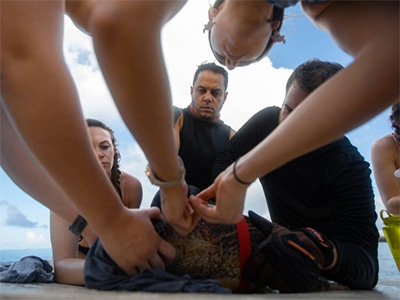
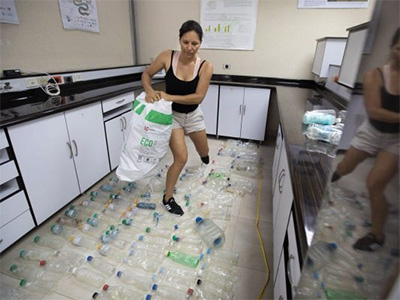
Leaving a Legacy
The marine life of the Galápagos islands are under constant threat; threat by human captures, threat by invasive species, threat by microplastics and plastic pollutions. This late into the climate crisis, it is up to the next generation to learn from the previous generations’ mistakes and fix the problems left in the wake of decades of plastic abuse.
Purposeful Pedaling
Seven-year-old Otto sifted through the sand of Playa Mann. His left hand was full of plastic bottle caps and wrappers, his right hand pulled out what he originally thought was a pink seaglass. As his hand wrapped around the object he realized it was too big and light to be sea glass.
“I think it’s melted plastic,” Otto said.
He reached for the smaller reusable bag his instructor Santiago Insuasti gave him and added to the rest of the trash he’d collected.
Once a month, Insuasti organizes a cleanup for his students in his cycling courses. The group of 12 kids ages 5 to 12 ride their bikes to the town plaza from their corners of the island’s capital.
The club has already built a routine for these cleanups. As soon as they arrive at the plaza, they line up on their bikes in front of Insuasti and plant one foot on the ground. Before they receive their bags and assignment for the cleanup, they have to recite the importance of doing the cleanups.
“To help the ecosystem!”
“To clean up our home!”
“So the sea lions don’t go extinct!”
Insuasti makes them do this exercise not just on the days they do cleanups, but also five days a week during every biking practice. He said he believes this is crucial for their young minds because they won’t understand the importance of it if they are only reminded once a year. On the days when a student may be stumped, he reminds them. To him, it’s about respecting the island and giving a hand back to mother nature.
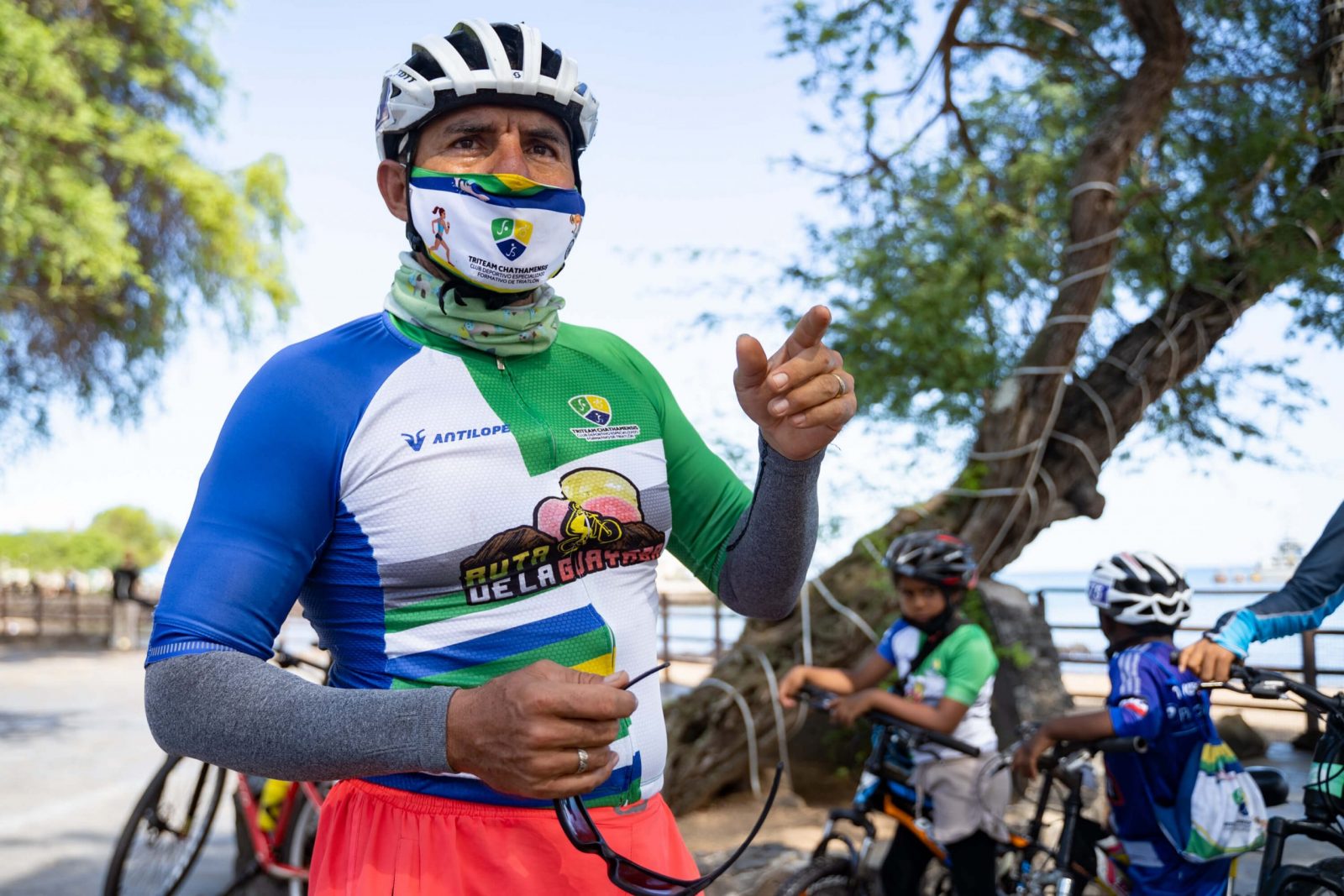
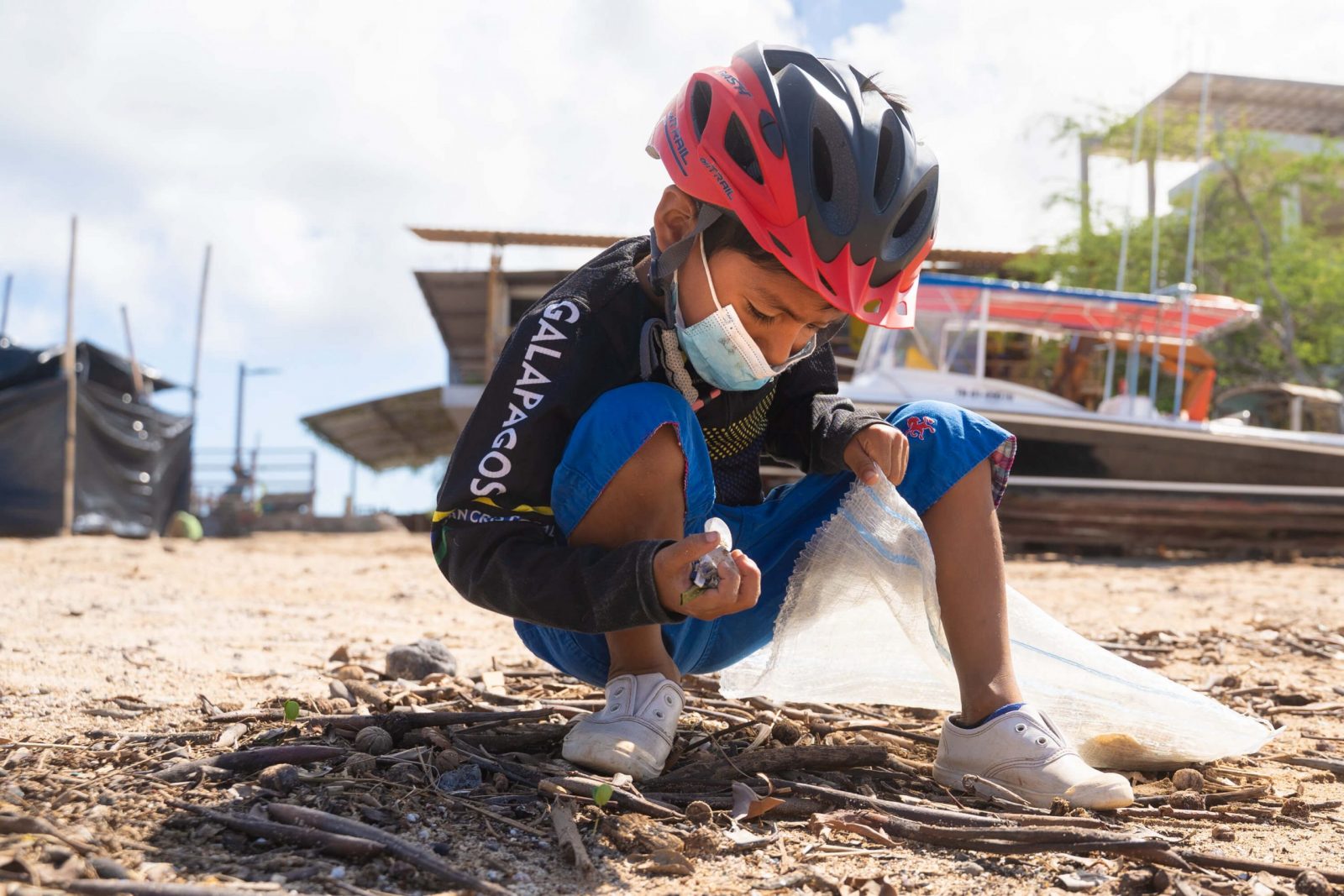
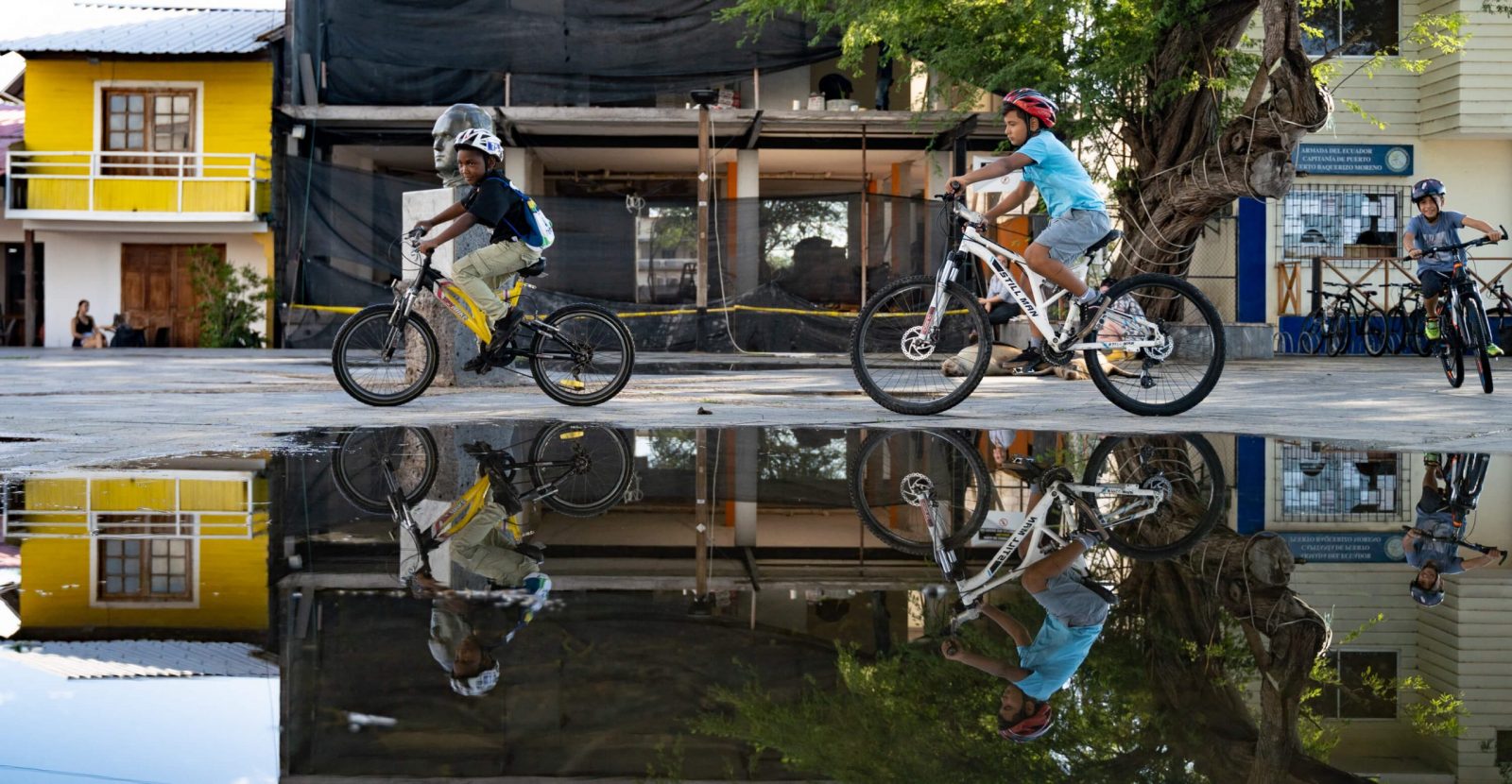
Top left: Coach Santiago Insuasti delivers to the group of biking kids before they begin the day’s clean-up on March 16, 2022. Top right: The youngest of the group, 6-year-old Justin, squats to collect a small pile of plastic. Bottom: The kids race around puddles at the central plaza while they wait for Insuasti’s next instructions.
The kids split into groups, the youngest with the smaller bags, and told to focus on microplastics. The older kids grab bags half their size, bragging about how they are going to fill their bags up with the larger items on Playa Mann.
Insuasti also works with the Galápagos National Park to organize cleanups for island residents, including people who are scuba-diving certified to clean underwater. However, Insuasti said these island-wide cleanings occur less regularly than he thinks is needed and many of the locals that promise to help are no-shows.
“If the government don’t do nothing, we citizens need to,” Insuasti said. “Or we are going to miss the beauty we have here.”
Marine Invaders
Insuasti believes there is a direct correlation between teaching kids how to ride bicycles on a competitive level and teaching them to be ecologically focused. For Insuasti, 47, biking started as a form of transportation to reduce his carbon footprint. He said he began loving biking as a sport when he realized it was the only sport that stopped him from drinking. Insuasti said that with every other sport he tried to stay healthy, he could keep his habit of drinking excessively the night before and still be able to perform. Competitive biking was the first sport that forced him to reevaluate his habits.
Now, along with environmentalism, biking is his passion that he wants to share with the next generation.
Insuasti wants to show his students that their actions directly affect the island, a concept he believes older generations don’t understand. He said when many locals see the trash on the beaches, they blame the tourists that come to the island instead of looking at their own actions.
“It takes time to change the behavior…they doesn’t believe it can happen in the Galápagos because they say it is the best place on the planet,” Insuasti said.
Murky Mindsets
Seeing the development of San Cristóbal since he was a kid, Jaison Castañeda intimately knows the uniqueness of the island, but also the issues that might be its undoing.
“We are not immune inside of the world, but when you talk about the Galápagos and conservation, it’s something that’s global,” Castañeda said.
Castañeda, 30, is a park ranger for the Galápagos National Park. Castañeda mainly investigates vessels that enter the Galápagos Marine Reserve alongside other Galápagos government agencies but also helps organize coastal cleanups for the park.
Though Casteñada’s family has lived in San Cristóbal for four generations, it wasn’t until his mid-20s working in the tourism industry that he became interested in the beauty of the island and motivated to pursue a degree in environmental management.
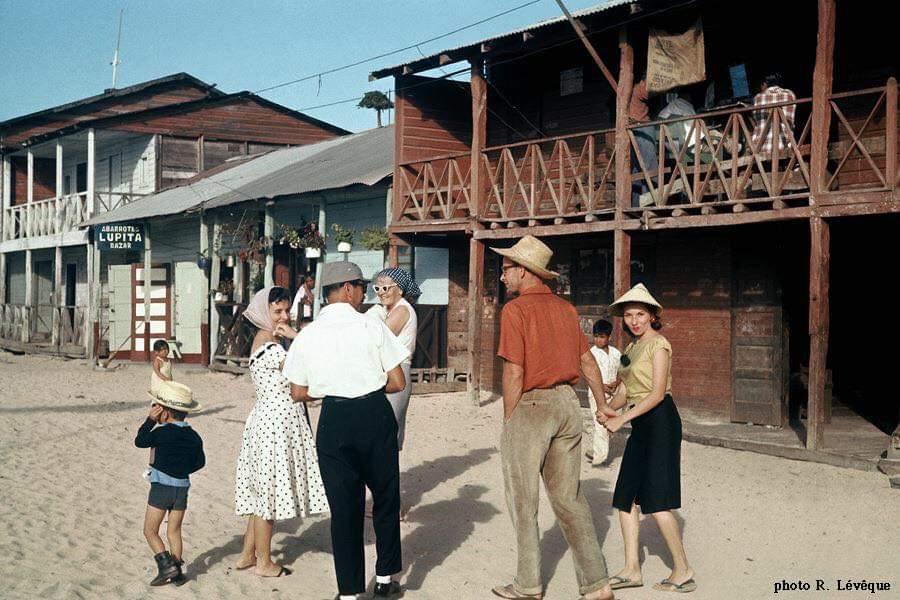
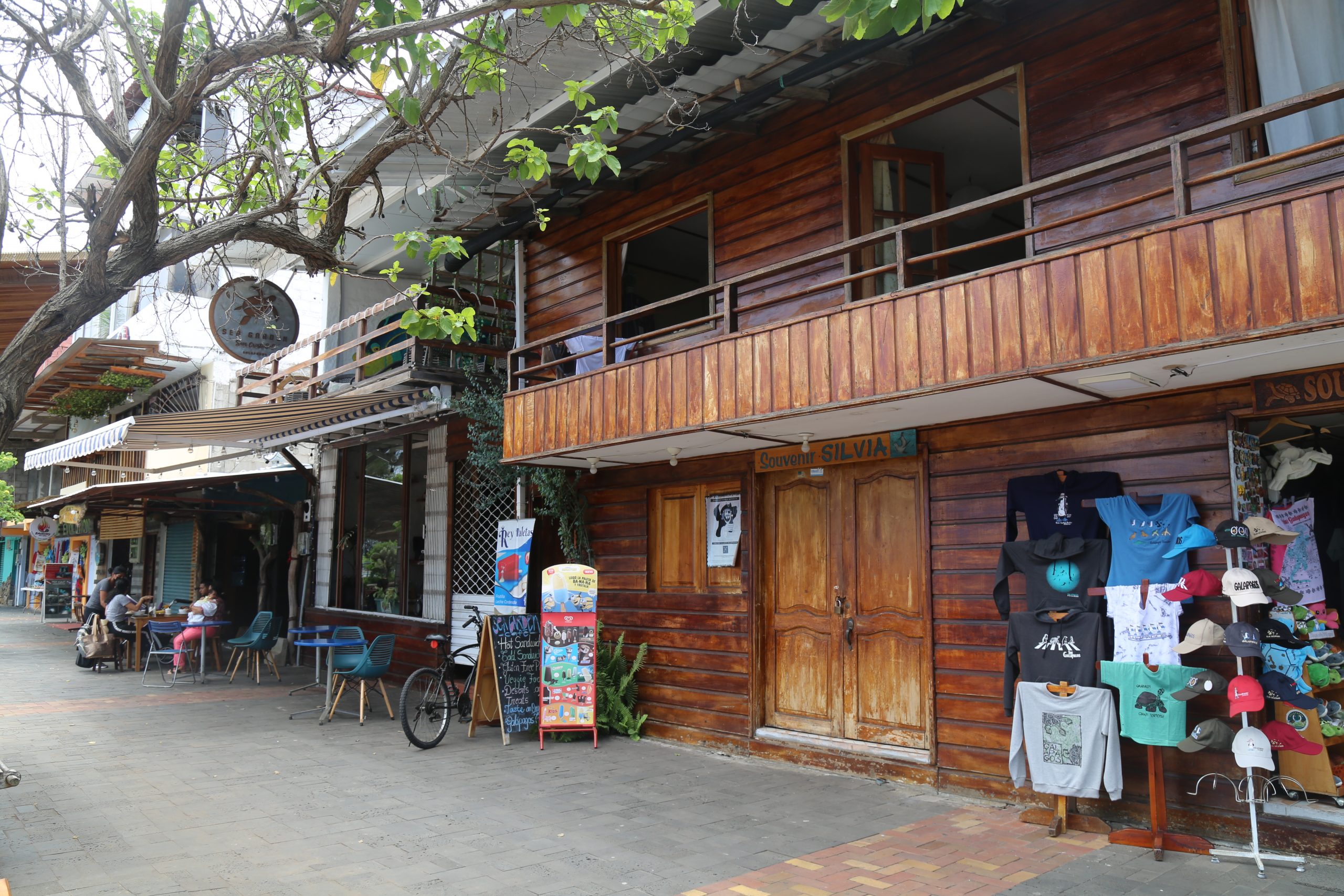
Casteñeda witnessed tourism change the landscape of his home over the years. Here is the shoreline of Puerto Baquerizo Moreno in the 1960s compared to the 2020s. The photo from 1960 was taken by R. Lévêque.
While studying at the University of San Francisco in Quito, Castañeda began working with Muñoz and Alarcón as a field manager for their sea turtle research. Muñoz’s team needed someone who could teach them the ins and outs of the island, help them catch wildlife, and be an overall handyman.
Castañeda said many locals, including himself, aren’t taught to be passionate about conservation growing up. He mostly believes this is due to the lack of education in their own environment despite seeing it every day.
“I didn’t know anything about the ocean. I went to the beach, I swam, I surfed, but didn’t know anything until I graduated,” Castañeda said.
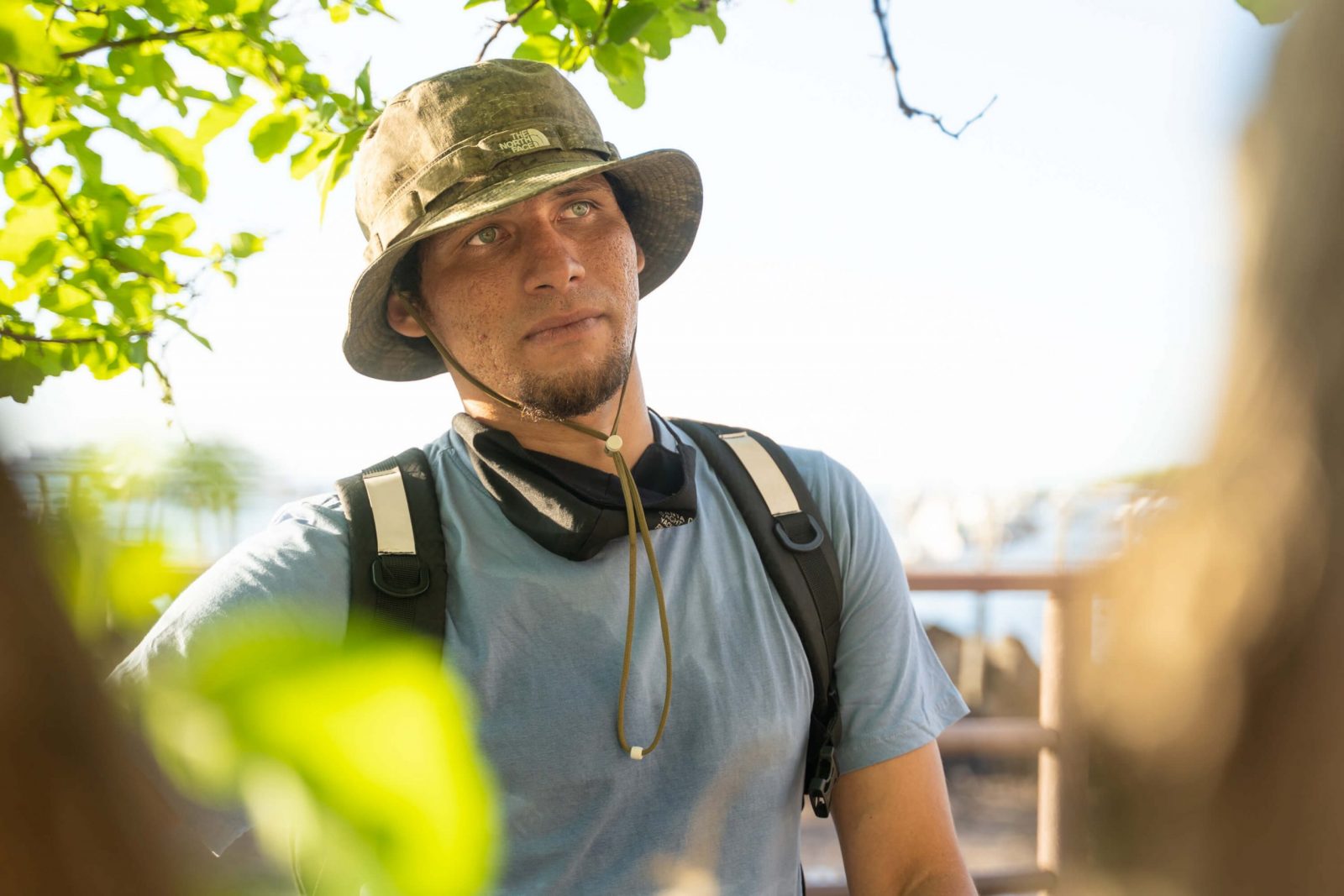
Jaison Castañeda, though most islanders affectionately refer to him as “Gato” because of his piercing eyes.
Castañeda initially only cared about the research because of its proximity to working with wildlife. However, spending days with Muñoz talking about their research with plastic pollution that he said made him realize how ignorant he had been his whole life to the issue.
There are issues that our previous generations were not conscientious of when raising us, Castañeda said. It was when he was working with Muñoz that he began to learn about how those seemingly meaningless pieces of plastic he would see everywhere were causing much larger issues to the health of the island and its inhabitants.
The Galápagos is synonymous globally with concepts like nature, wildlife and conservation, making people focus on the island without considering the larger world picture.
“We are not immune inside of the world, but when you talk about the Galápagos and conservation, it’s something that’s global.”
But Castañeda believes that the problems in the Galápagos is not singular and is affected by world actions.
In all of his cleanups, he finds trash from all over the world that ended up on the island. Seeing the international trash, Castañeda realizes the issue he sees on the island isn’t an anomaly. However, it doesn’t discourage from believing change is possible, it only makes him more adamant about the importance of changing people’s mindsets.
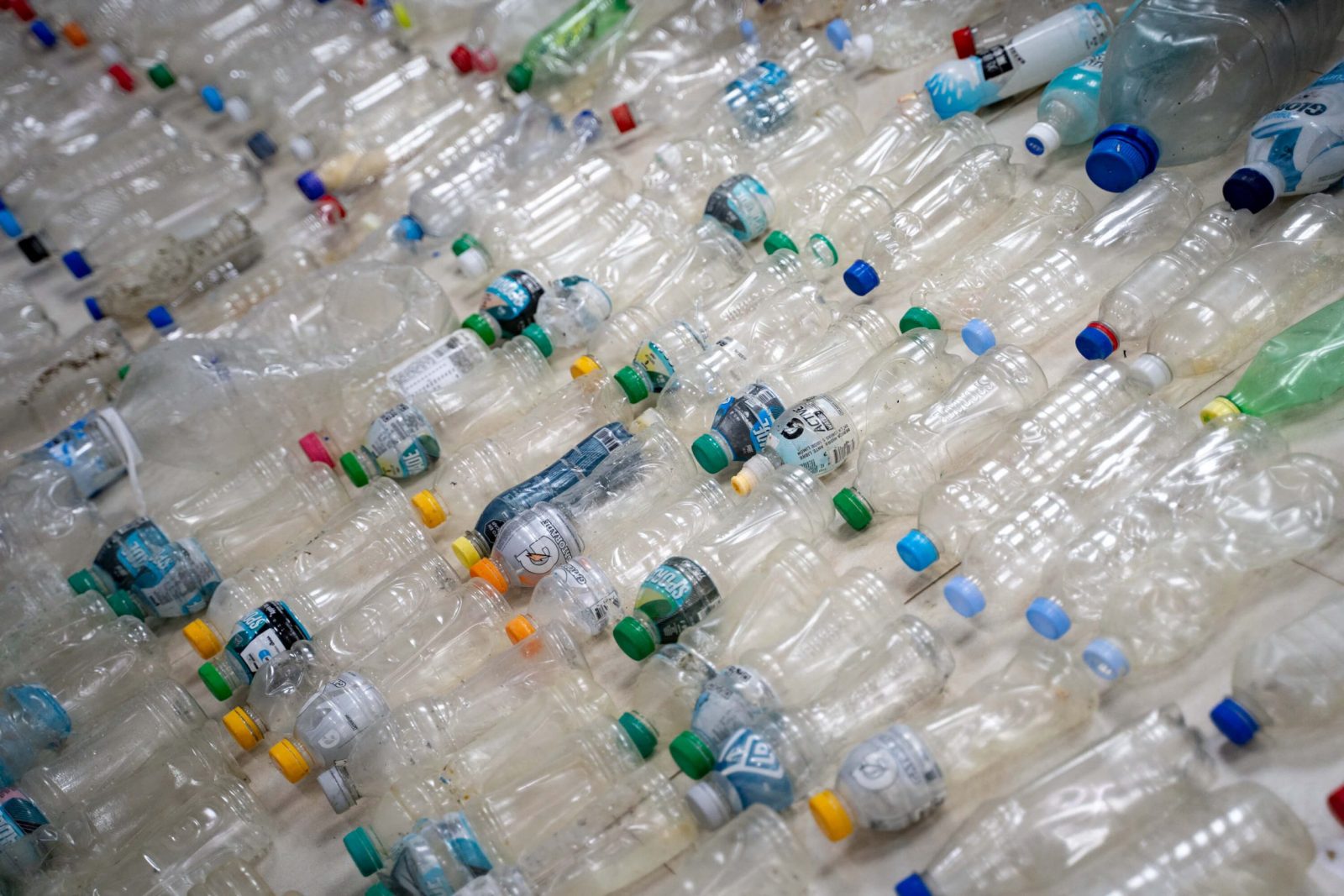
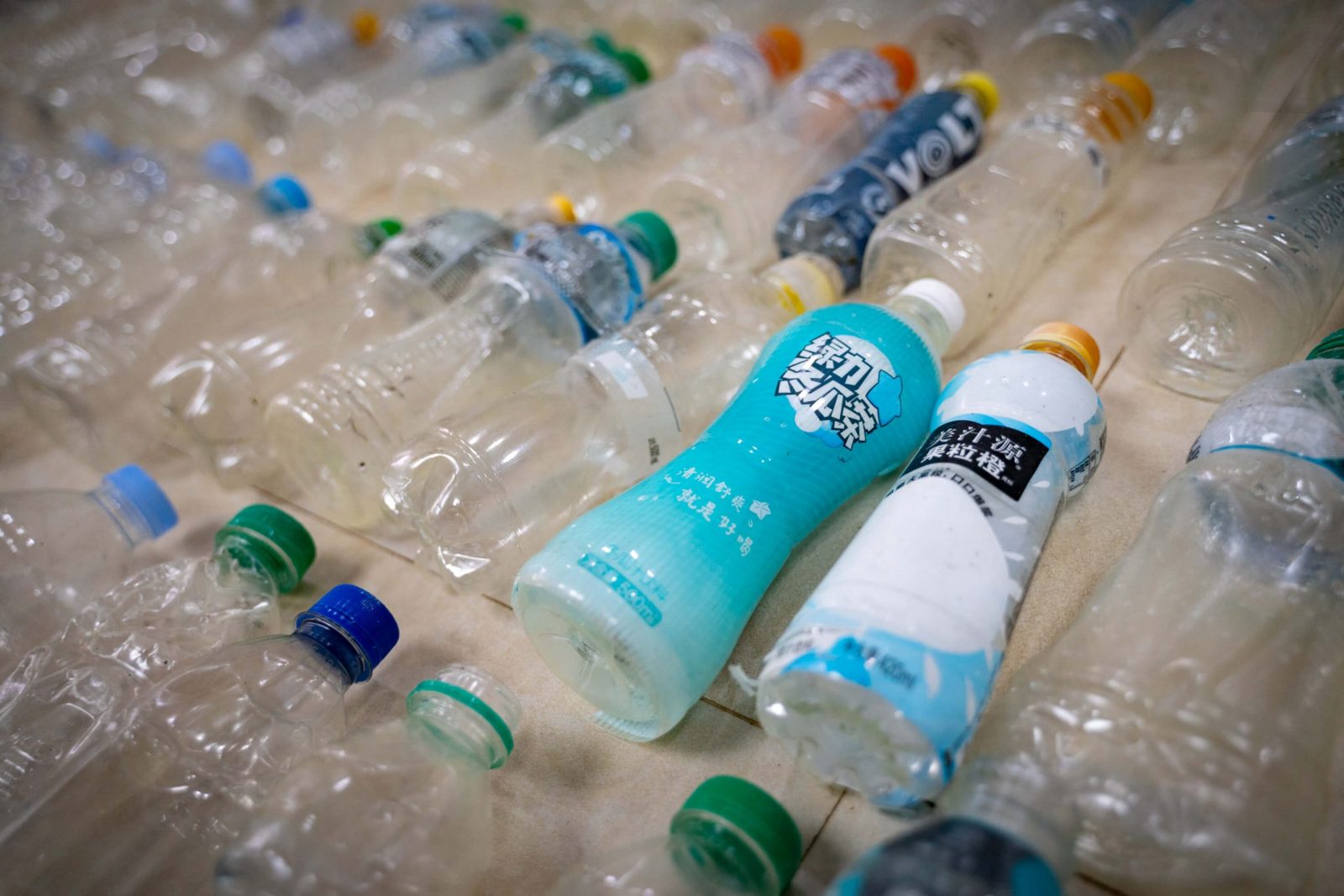
Plastic bottles are laid out in the Galápagos Science Center lab in preparation for data analysis. All of the plastics from this day came from a small, 30-minute clean-up session in a 50-yard span of the remote beach Puerto Tablas. As seen on the labels, many of the bottles weren’t from local littering, but instead washed ashore from other countries and continents.
The perception tourists have of the Galápagos has made Castañeda realize that if he asks them to participate in cleanups, they will most certainly say yes and follow through. He wishes he could say the same about the people he grew up with.
When the national park organizes beach cleanups around the island, they post it on their social media announcing the date and locations. Their comments flood with people promising that they will be there. Casteñada’s job is to make sure they keep their word.
He said that he always tries to motivate locals to be the majority of his cleanup groups and only asks a handful of tourists. Castañeda said it’s important for him to prioritize locals so that they have the opportunity to be introduced to their island, many for the first time.
“Recently, I’ve been focusing on working with young locals, usually 18 or 19, because they always leave shocked,” Castañeda said.
Points of Consciousness
“What are they doing with the turtle?” shouts a father spending a peaceful Sunday morning snorkeling with his two children along Punta Carola beach, on San Cristóbal’s western tip. They spotted Muñoz emerging from the sea tethered to a 40-pound green sea turtle.
The father said it was the first time he’d seen a turtle this close.
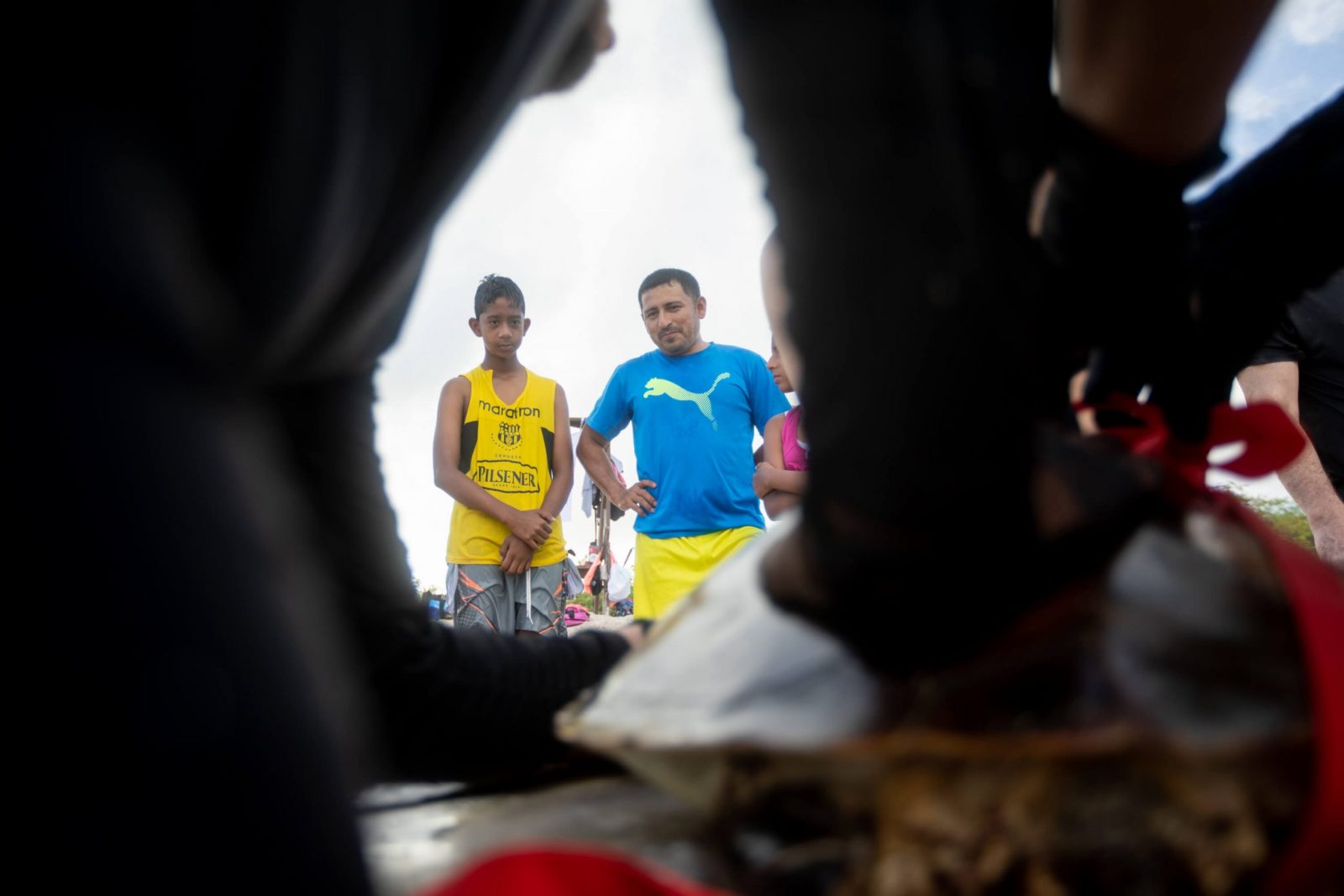
The family watches in awe as Muñoz and his team get to work on their next catch at Punta Carola on March. 13, 2022.
The turtle takes three people to transport from the edge of the water to a plastic folding table on the shore.
The turtle, a female, slaps her flippers up and down against her side, resisting the sea-water drenched towel that a veterinarian student places over her eyes to calm her down.
“Someone grab a stick,” Muñoz shouts to the group of students huddled around the makeshift examination table. Someone uproots a stake indicating a nesting site at the end of the beach and hands it to Muñoz, who balances it between his shoulder and the shoulder of another student. The sea turtle is tightened into a harness and fastened to the stake to measure its weight.
On top of their own research, Muñoz and Alarcón spend their weeks teaching students how to conduct field studies. This week, they are helping veterinarian students from North Carolina State University analyze turtle blood for potential blood type cross matching. Marine turtle blood types are one of many facets of science that have received little research funding.
In the midst of the action, more curious local children approach the table. The kids ask questions to the researchers about the needles used for drawing blood and the pliers used for tagging front fins. One 9-year-old girl, Mia, pipes up, explaining that her dream is to be some kind of scientist. Maybe a doctor, but probably a veterinarian.
It’s Mia and other children on the island that people like Jose Luis ‘Joselo’ Ballesteros are trying to raise into environmentally conscious adults.
“Without the youth of today, the future is uncertain,” Joselo Ballesteros said. “Only if they get the education they deserve do we have a future.”
Ballesteros is a former park ranger that left to create his own scuba diving company and program to teach adolescents on the island how to dive as well as enroll them in programs for the naturalist guide entrance exams.
Ballesteros provides his students with opportunities from learning how to dive, to becoming certified divemasters, and even enrolling them in language classes.
“I give her people to take care of her.”
One of his motivations for starting this program was to provide stable job opportunities for the children of the Galápagos but specifically for the children of fishing families.
Though the government imposes a large number of regulations on fishing practices, they do not provide these families with any alternatives, Ballesteros said. That is why an integral part of his program is about giving his students careers as opposed to the seasonal fishing they were raised with.
His other motivation to start a program was to ensure that locals could become the best representatives to speak on the issues of the Galápagos.
Though many of his students have lived their whole lives in the Galápagos, Ballesteros said that they don’t know anything about the marine ecosystem.
Ballesteros, 41, recalls sitting in one of his former classrooms to hear the lessons not that long ago. It was 20 years later, but the curriculum had not changed.
His program became about more than just providing exposure to the youth that would not see it without it. Ballesteros said it became about providing incentives and extracurriculars that put them on the right path, a program that the government fails to provide.
“A teenager doesn’t know how to motivate themselves,” Ballesteros said. The government should be doing more to motivate the youth of the island with things like workshops and classes, Ballesteros said, to keep them away from the many vices and distractions.
Alexis Chango, 25, remembers the day he knew he decided to be a naturalist guide. When he was 9, he won a contest to go snorkeling around the Leon Dormido rocks. He said that he had never seen the beauty of his island like that before, and if it were not for that opportunity Chango thinks he probably would have never had the chance.
Chango credits the event for igniting his passion for ecology, motivating him to study to be a naturalist guide and to learn English and French to better communicate in his tours.
Ballesteros also provides free scuba diving lessons to locals. The only thing he asks in return from participants is that they research the importance of protecting the marine ecosystem and help around his shop.
Ballesteros has always been inspired by the ocean — from the first time he saw a starfish cleaning his uncle’s fishing boat to the ethereal feeling he gets when he’s weightless during a dive. The ocean has given him everything. Now, he wants to return the favor.
“I give her people to take care of her,” Ballesteros said.
Finding Hope
After a day’s work on the water, Muñoz and Alarcón have dinner at Midori, a sushi restaurant located on the malecon that winds around San Cristóbal’s port. Muñoz nurses a beer and Alacron sips a smoothie while Brisa relaxes in a chair with her iPad.
What they find in the field disturbs them, but people like Insuasti and Ballesteros give them hope.
He compares his vision for the plastic pollution issue to closing the hole in the ozone layer. He wants to see a future where humanity understands the threat and works together to eradicate plastics like it did to eliminate chlorofluorocarbons.
“What we are watching at the moment with plastic pollution is the representation of climate change, because sometimes you cannot see climate change, but when you see plastic pollution, you are watching the impact, you are getting the message right away,” Muñoz said. “It’s a representation of all of the bad things that we are doing as a human society.”
He says it’s this tangible action that gets people motivated. It’s what keeps him and Alarcón doing the work they do. That, and the world they want Brisa to inherit.
“You have two options: You stay positive or you don’t,” Muñoz said.

